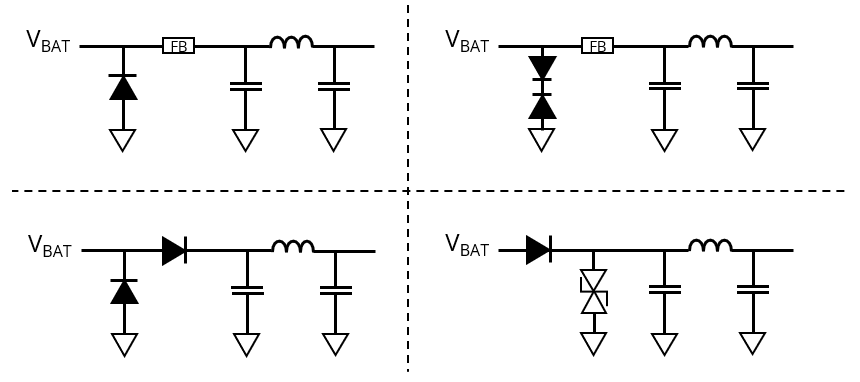EMC Question of the Week: September 11, 2023

The most important feature of TVS diodes used for transient protection on a DC power input is that they
- are bidirectional
- have low capacitance
- have low connection inductance
- have three terminals
Answer
The best answer is “c.” In order to conduct an ESD current away from the device it is protecting, a TVS diode must be connected through a very low inductance. The connection inductance limits the rate at which the current through the diode can ramp up from its initial value of zero. If the inductance is too high, the diode may not respond fast enough to provide adequate protection.
It is not always necessary for a TVS diode on a DC power input to be bidirectional. Unidirectional diodes provide protection against both positive and negative ESD transients. Of course, bidirectional diodes are necessary when legitimate signal or power input voltages can be positive or negative.
Diode capacitance is an important consideration when choosing transient protection for high-speed signal lines. However, it is relatively unimportant when choosing a diode to protect a DC input. (In general, diodes with a higher capacitance will be slower to respond, but capable of handling more transient energy. So, indirectly, the capacitance is always a factor.)
Finally, most TVS diodes have two terminals. Devices designed to protect two inputs that are both isolated from the circuit ground may have three (or more) terminals.
Have a comment or question regarding this solution? We'd like to hear from you. Email us at
